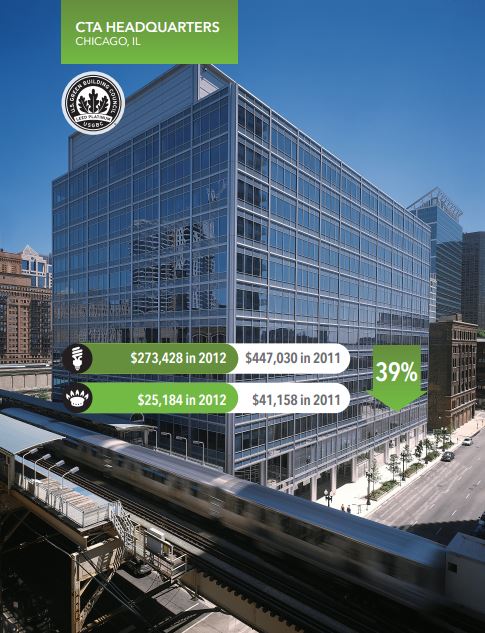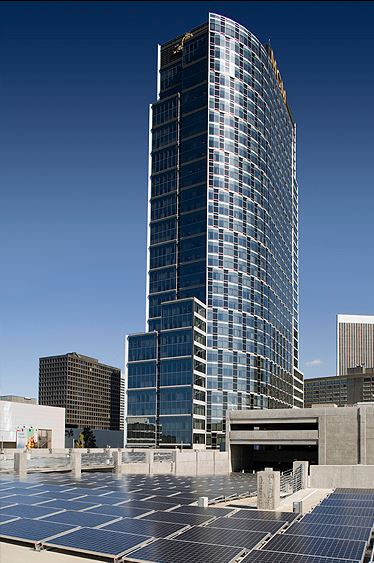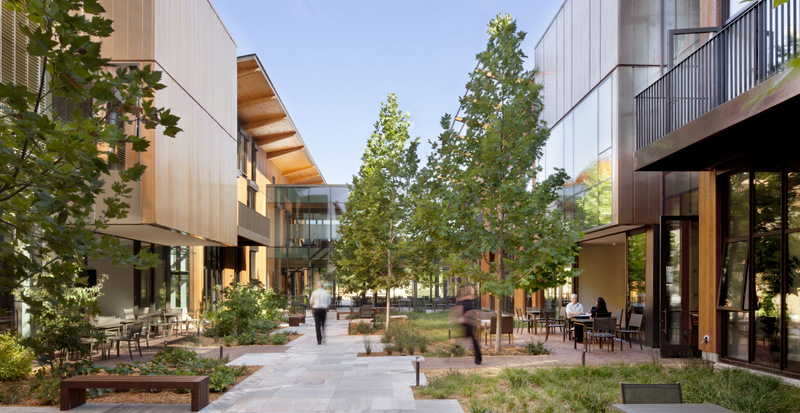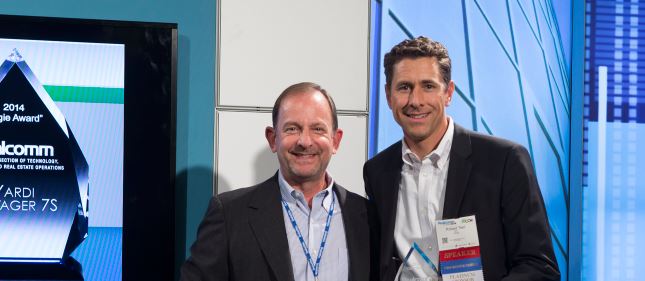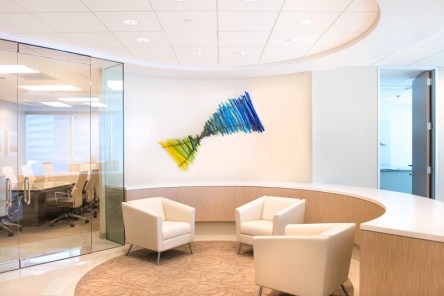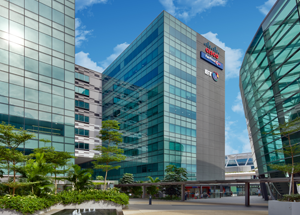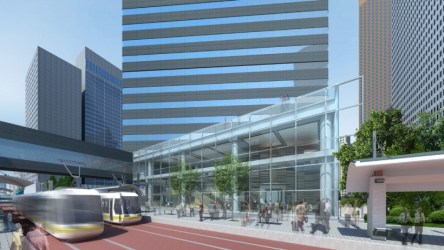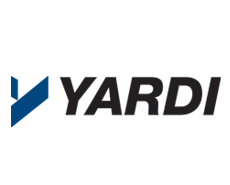Accessibility on several counts tops the list of secrets to success in e-commerce. That was the determination of a session on e-commerce site and building selection at NAIOP’s second annual E.Con e-commerce conference, held late last week in Atlanta. Moderator K.C. Conway, senior vice president of credit risk management at SunTrust Bank, led the spirited discussion among attendees and panelists Scott Belfer, senior vice president at CBRE Inc.; Amy Gerber, executive vice president with JLL; Michael Mullis, senior vice president of real estate for J.M. Mullis Inc.; and Hugh Williams, principal with Avison Young. The top seven drivers were determined to be: Proximity to customer demand clusters. While e-commerce consumers currently accept an average delivery time of three to five days, next-day deliveries are growing in popularity. Developers that can offer their e-commerce tenants fulfillment centers with cost-effective same-day and next-day delivery will have an advantage. Access to high-quality labor. Community colleges and universities become increasingly important as tenants seek sources of quality surge labor. Proximity to 3PLs. Ground and air hubs are still the life source of e-commerce. Avoiding driver vacuums. Ground transportation is in a precarious state. The nation is facing a projected shortage of 240,000 truck drivers. While this issue is sorely overlooked, panelists agree that any city or state that manages to address this concern would be appealing. Opportunities for infill buildings. While 1 million-square-foot distribution centers for Amazon and Walmart have recently grown in popularity, panelists foresee a high demand for smaller DCs within metropolitan areas. This will facilitate faster and less expensive delivery options for consumers. Automation may also decrease the need for large footprints, since there will be fewer humans and personal vehicles to accommodate. Heavy power and life systems. Large numbers of employees, an increasing amount...
Stars to Watch
Commercial Property Executive
This week, Commercial Property Executive unveiled this year’s Stars to Watch, 17 up-and-coming individuals and teams from across the commercial real estate industry that are sure to make more waves as they climb the career ladder. Like others recognized by this decades-long program, these 40-and-unders are exhibiting insight, creativity and dogged determination in completing deals and building businesses, often simultaneously seeking to give back by mentoring others, serving on other companies’ boards and involving themselves in their communities and social causes. Following is the list of CPE’s 2015 Stars to Watch. You’ll want to read about their accomplishments, featured in CPE’s February 2015 issue. Christopher Bellapianta, Director of Finance and Acquisitions, Advance Realty Georgia Collins, Senior Managing Director, Workplace Strategy, CBRE Group Inc. David Colman, Michael Colman, Tyler Ross, Principals, ROCO Real Estate Mathew Crosswy, President, Stonehill Strategic Capital Malcolm Davies, Principal, George Smith Partners Christine Espenshade, Vice President, Capital Markets, JLL Seth Grossman, Managing Director, Meridian Capital Group Michael Hart, Senior Managing Director, Corporate Occupier & Investor Services, Cushman & Wakefield Inc. Nicholas Hoffer, Senior Managing Director & COO, Hunt Mortgage Group L.L.C. Patrick Luther, Managing Director, Faris Lee Investments Benjamin Miller, Co-founder & CEO, and Dan Miller, Co-founder & President, Fundrise Nitin Motwani, Managing Principal, Miami Worldcenter Associates Taylor Snoddy, Managing Director, Transwestern Robert Stamm, Executive Managing Director, Savills Studley Lauren Staniec, Sustainability Coordinator & Enhancement Project Manager, Pyramid Management Group Armand Tiberio, Senior Vice President, Investments, Marcus & Millichap Real Estate Investment Services Inc. Craig Wilson, Executive Managing Director,...
Commercial Comeback
Detroit on the move
Ed. note: The third in a three-part series, our final article on the real estate realities for Detroit, Michigan, as the city emerges from a long period of decline. Read the first installments here (Part 1) and here (Part 2). Walking around downtown Detroit, at many times of day, feels like one has wandered onto a deserted movie set. Historic skyscrapers loom overhead. There are hints of change and progress: work on a new rail line, construction fences around old buildings, for rent signs in windows. What you don’t see, that feels strangest of all, are very many people. At 8 a.m. and 5 p.m., there is foot traffic as employees walk to or from their jobs. A great many of them are wearing Quicken Loan employee ID badges, identifying them as part of Dan Gilbert’s empire. Gilbert’s investment in the city, from real estate purchases – more than 50 buildings to date – in addition to centering Quicken’s headquarters downtown and funding a large portion of the M:1 RAIL line, is ubiquitous. “Dan Gilbert obviously is leading the charge in downtown real estate reinvestment. He’s acquired 52 properties in the last couple of years, for Quicken and various subsidiary companies of his own,” said John Latessa, Senior Managing Director of CBRE’s Michigan operations. The other major property accumulator, the Caesars Pizza-founding, sports team-owning Ilitch family, has been buying up lots and decaying buildings for a new hockey stadium for years. “(Gilbert and the Ilitches) are generating the interest that didn’t exist before. If they weren’t doing this stuff and couldn’t do it on their own, a lot of these other projects wouldn’t be possible,” said Scott Allen, president of Fourmidable, a Detroit-based multifamily property management firm. Rising rents for multifamily Detroit’s real estate...
Smart Green Buildings...
Commercial development
Going green has become a way of life for many of us. Mostly thanks to the efforts of environmental groups who advocate for a greener future, we can now easily incorporate sustainable practices into our daily lives. We carpool to work, buy hybrid cars, use reusable shopping bags, compost, reduce energy consumption and save water any way we can. Whereas these individual undertakings are indeed effective and help stretch our planet’s resources on a daily basis, achieving sustainability on a larger scale wouldn’t be possible without serious input from our nations’ development leaders and influencers, including architects, urban planners, property owners, managers and landlords. Many developers have already adhered to the green building movement and started delivering high-performance structures that prioritize livability and occupant well-being. Aside from the obvious environmental benefits, building green typically translates into happier employees, improved productivity, lower operating costs and implicitly higher returns for owners. Moreover, by designing and constructing ecologically-intelligent buildings, developers may obtain financial and regulatory incentives to further support their practices. According to the U.S. Green Building Council (USGBC), New York, Maryland, Massachusetts and Oregon are on the leading edge of states offering tax credits for LEED Certified buildings; Portland (OR) and Seattle (WA) offer grants for energy modeling, commissioning and related costs; the private Green Building Loan Fund in Pittsburgh does much the same on a loan basis; and Arlington County (VA) links preferred zoning considerations for LEED projects. From highly-efficient windows, formaldehyde-free furniture, live walls and green roofs, water-saving equipment, solar panels and personal comfort controls, there’s a plethora of new technologies available to help investors add function, cost-efficiency and value to commercial buildings. The importance of delivering healthy spaces derives precisely from the huge impact that the built environment has on human health, especially...
LOBOS
Providing Utility Solutions
In efforts to reduce energy consumption and CO2 emissions, commercial real estate leaders are turning to sustainable building and management techniques. While there are countless products and services on the market to improve efficiency in these areas, few offer an unobtrusive option that is designed to interface seamlessly with existing HVAC control systems in most modern buildings–LOBOS is different. Whether it is a newly constructed building or a recent renovation, even the greenest buildings can achieve greater energy and cost savings with LOBOS. Yardi subsidiary Enerliance produces the Load Based Optimization System (LOBOS), an advanced software platform that layers on top of existing HVAC control systems to dramatically reduce energy consumption in large buildings and campuses. The system provides automated energy efficiency reset control strategies, real-time automated demand response functionality (“Smart Grid”), system fault detection and diagnostics, and continuous commissioning. By adding LOBOS to the Yardi Energy solutions bundle of offerings, our customers can enjoy the maximum gains in energy efficiency and savings possible today. Scot Duncan, Enerliance founder, commends the relationship between software and utilities, “LOBOS is delivering owner-friendly, tenant-friendly demand reduction which benefits the community, owners and occupants alike. This is a great example of the facilities community working with the utility to prevent brownouts and blackouts, reduce the need to build new power plants, and to manage energy costs for the facility,” says Duncan. LOBOS is a comfort based system. That is, it monitors and controls cooling, heating and air handling systems to improve occupant comfort while simultaneously reducing utility costs for building owners and tenants. To date, LOBOS has been installed in over 400 buildings and has delivered more than $7 million in annual energy savings to clients, or nearly 143 million kWh. The results have garnered an honored position for...
Commercial Green
Certification Benefits
The recent recession may have been the best thing to happen to sustainable commercial building. During those years, sustainable buildings proved their value: sustainable properties experienced lower vacancy rates; builders with green experience fared better than their counterparts; and businesses began to acknowledge green building and renovation for its cost-saving benefits. The environmental benefits were often received as an afterthought. “During the recession, tenants and landlords tried to save on up-front construction costs, but they realized that by putting sustainable strategies in place, they could really save money in the long run,” says Bill Abballe, Program Manager at SouthFace. It’s not just green buildings that can cut costs in the commercial sector. The Green Edge report issued by the National Resources Defense Council offers up-to-date, detailed data on the benefits of green infrastructure for commercial developers. Research by Building Owners and Managers Association International (BOMA) asserts that, “implementing sustainable building practices is not a fad, but a proven strategy for reducing costs, enhancing asset value, improving tenant satisfaction and increasing net operating income.” Studies by the Green Building Alliance summarize what a variety of sources have confirmed. Properties and communities with green building certifications achieve: Higher rental or resale value Higher occupant satisfaction Higher demand Lower operating costs Yet even the greenest commercial building will fall short of its potential without proper certification. Third party certification programs provide validity to green building claims in a way that can attract capital and tenants with ease. Commercial developers may now choose between a number of sustainable certification programs that offer various levels of prestige: Building Research Establishment’s Environmental Assessment Method (BREEAM) was the first comprehensive green building rating system and is currently the leading international design and assessment method for sustainable buildings. BREEM thoroughly analyzes multiple factors throughout the project’s lifecycle to determine its sustainability ratings. Leadership in Energy and Environmental Design (LEED) is a sustainable building certification program that recognizes best-in-class building strategies and practices. It gained popularity in the United States and now has the largest globally accepted certification program. But perhaps the most prestigious certifications come from Living Building Challenge (LBC), which honors built projects that mimic the natural environment’s efficiency and balance. Net Zero operations in water, waste, and energy are the mere foundation to other rigorous standards. To date, there are only eight LBC buildings on earth. Green Globes has gained popularity in North America as an affordable alternative to the aforementioned programs. This environmental design and management tool offers online assessment and guidance for design, operation, and management. Quick feedback and interactive components makes this certification program a rising star. There are also several regional and state programs, such as EarthCraft Light Commercial, which specializes in green building certifications for structures in the southeastern United States. The small scale of its realm works to the organization’s advantage. EarthCraft is able to perform in-person evaluations to assure compliance. While certifications may verify a commercial property’s sustainability at the time of construction or renovation, it takes the right software to monitor long-term efficiency and ROI. Automating daily meter readings, data analysis, costs and consumption can be beneficial. Owners and operators can quickly address any issues that may arise to assure optimal operations. To stay ahead of the curve, companies must develop portfolios with proven sustainable features. The demand for certified, sustainable commercial building is estimated to increase. Cushman and Wakefield surveyed 25 premiere real estate property owners and managers in North America. 60% of respondents believed that investor interest in sustainable performance is increasing. 68% of respondents currently include sustainability in their investment evaluations. Businesses aim to create the best environment for their talent, driving end-user demand for holistic sustainability. From investors to tenants, sustainable building has taken center stage as the future of commercial real...
Measuring Payback
Assessing green initiatives
Investing in earth-friendly energy solutions is an ongoing trend in real estate, across all market sectors. Political and ethical reasons for implementing green building and utility systems notwithstanding, investors and owners of real property assets are often motivated to use new technology for monitoring and controlling energy use for an even simpler purpose: to cut costs. Government-supported initiatives, like Ontario’s saveONenergy for business, are just one of many motivators. Commercial owners and managers across North America are looking for creative ways to increase ROI and add investment value to existing properties. Energy retrofit projects are one pragmatic and earth-friendly way to achieve added value. In some cases, incentive funding can cover up to 25-30 percent of the project cost. But given the cost of implementing a new system or choosing a new contractor to handle your real estate energy needs, it isn’t easy to determine whether a significant investment is saving you money, and energy is one of the most expensive requirements of commercial property management. At the Green Real Estate Conference, held in late March in Toronto, a panel of experts from the energy sector addressed this topic and provided valuable insight on the best practices for energy management in commercial real estate. One analysis, provided by the forum organizers, estimates that energy costs comprise around 40 percent of building operating expenses. But the opportunity to reduce those costs is tremendous: a newly constructed green building typically cuts down conventional energy output by around 30 percent. And even if you are not building a new structure from the ground up, there are now alternative management methods to save resources and reduce expenses – often with minimal work required. Swift advancement in technology monitoring systems now makes it possible for large commercial buildings, with...
Investment Drivers
Commercial real estate
The real estate landscape is in constant evolution, with developers always on the lookout for smart investment opportunities. Whereas the direction of new development efforts is dictated by a combination of factors, including market conditions, economic considerations and demographic trends, quality infrastructure systems act as a platform supporting real estate growth across the globe. According to a recent report issued by the Urban Land Institute in collaboration with EY, solid infrastructure – including transportation, utilities, and telecommunications – makes the commercial real estate sector tick, along with consumer demand and workforce skills. Infrastructure 2014: Shaping the Competitive City aims to shed light on the role of infrastructure in the development of healthy communities. The eighth in a series of reports examining infrastructure trends and issues, the ULI/EY analysis was released at ULI’s 2014 Spring Meeting in Vancouver, British Columbia. Conducted in January 2014, the survey mirrors the opinions of 241 public sector officials and 202 senior-level real estate executives (developers, investors, lenders and advisers) in large and mid-sized cities all over the world, with concentrations in the United States, Europe and Asia Pacific. About 86 percent of survey respondents were based in the United States. According to the report, the majority of public leaders (91 percent) regard infrastructure quality as the top influencer of real estate investment and development decisions. Infrastructure was rated as second to highest by private leaders (86 percent). Meanwhile, the private sector (90 percent) viewed consumer demand as the top feature determining investment locations. Government service – regulations, tax structure, and quality – fell in the midst of influencing factors for both public and private respondents. “This survey indicates a growing awareness among the public and private sector of the importance of investments in a variety of transportation systems, including...
Digie Awards
Honor for Voyager 7S
Realcomm recently announced the winners of the 2014 Commercial Real Estate Digital Innovation Awards (AKA the “Digies”), including an award for Best Real Estate Technology Innovation, which was won by Yardi Voyager 7S. The latest and most advanced version of Voyager, Yardi’s flagship property management and accounting software, is used by thousands of clients to manage millions of apartments, commercial rentals and other property around the world, was lauded for: Comprehensive ERP incorporating both front and back office Extensive cloud-based architecture Incorporates comprehensive suite of mobile applications Yardi Voyager 7S works with all Internet browsers and is tablet compatible. In the following video, Rob Teel, Senior Vice President, Global Solutions, talks about integrating the front and back office with the power of Voyager 7S. Teel, who accepted the award for Yardi at Realcomm’s recent conference, commented: “We are thrilled to be recognized by Realcomm for our innovation with Voyager 7S. We live in a mobile world, and it was really important to our clients that our flagship Voyager product line be available on the go through tablets and multiple Web browsers. We would also like to congratulate the 1,000+ clients that have already upgraded to Voyager 7S.” In addition to Yardi’s Digie Award, a number of clients were also recognized at Realcomm and IBCon for exemplary accomplishments involving use of technology, automation and innovation. They included: Best Use of Automation – Commercial Services CBRE – Los Angeles Office Development of leading-edge open space design concept Digitization of all documents to enable mobile environment Collaborated with Google to create Liquid Galaxy experience Best Use of Automation – Property Management Arcadia Management Group Highly automated tenant maintenance, mobile inspections and procure to pay Consistent willingness to take risks with new technologies Commitment to educate and share knowledge and experience with the industry Most Intelligent Building Projects – Office Portfolio Detroit Portfolio – Bedrock Developed a comprehensive portfolio-wide smart building strategy Integrated an extraordinary number of disparate systems Willingness to share successes and failures with the industry Best Use of Automation – Real Estate Investment Management Deutsche Bank Wealth & Asset Management Created a comprehensive integrated platform for investment management Demonstrates strong project management and execution of large-scale technology implementations Continual improvement and automation of complex business processes Best Use of Automation – Retail KIMCO Realty Development of advanced leasing, budgeting/forecasting and business intelligence applications Continual willingness to interact with peers and take leadership role Implemented advanced web-enabled lighting solution Most Intelligent Building Projects – Office Building Pennzoil Place – Transwestern Developed complete and comprehensive vision for a smart building Design concept blended a balanced integration of both IT and BAS Created a revenue stream by selling broadband back to tenants Most Intelligent Building Projects – Retail Taubman Implementation of broadband network throughout retail mall portfolio Continually striving to find new and innovative ways to enhance the customer experience Created new revenue stream by providing broadband services to tenants Realcomm has been awarding Digie honors since 1999. Yardi has earned many of the awards, including one in 2013 – also for Digital Technology Innovation – for Yardi Leasing Pad, the mobile leasing application. For a full list of the 2014 award winners, see: http://realcomm.com/advisory/advisory.asp?AdvisoryID=643 Congratulations to all of the...
Landscape Architecture
Investment Property Curb Appeal
Curb appeal is key when it comes to your investment properties, be it residential projects or commercial developments. Whether you want to attract or retain residents at your apartment community, or create a stimulating office environment, creating curb appeal may help you get ahead of the competition while delivering a top-quality product. Curb appeal may mean a lot of things, from the general appearance of the space and building architecture to cleanliness and landscaping. Multi-family experts agree that the first impression that the prospective client gets when entering a property may be decisive in the selection process; but it does not stop at that. By providing great recreational amenities, you’ll be making it increasingly difficult for existing residents to depart. Curb appeal can bring you up or take you down, depending on what you have to offer, hence the importance of adopting a holistic approach when embarking on development projects. Moreover, curb appeal may be used to give a huge boost to your marketing efforts. Make sure you feature photos spotlighting the curb appeal of your communities when running social media campaigns, online ads and any other promotional crusades. It can be effectively used to transmit a visual message by translating it into promotional language and integrating it into your marketing pitches. Descriptive lines such as “beautifully landscaped community”, “lush English-style gardens” or “modern design complementing existing architecture” will render your property unique and memorable, so as it sticks in your prospects’ minds. Visualization is a powerful tool when trying to turn the tables in your favor. Prospective customers may easily picture themselves lounging around at your community’s infinity pool, enjoying exquisite sunsets on the rooftop garden while sipping on a favorite cocktail, or barbecuing with friends. It’s these kinds of images that linger and make prospects want to buy what you’re selling. As one of Texas’ largest landscape architecture and planning firms, TBG has witnessed first-hand the effects of well-constructed environments. Heavily -sought after properties are most often defined by their ability to provide inclusive environments where functionality meets sustainability and innovative design. Just like location, price or staff responsiveness, curb appeal may act as a deal breaker in today’s competitive market. “There is a great focus on including outdoor spaces in commercial projects whether it be a small courtyard where people can interact, a rooftop garden or site landscaping”, Bill Odle, managing principal at TBG Partners’ Houston office, told the Houston Business Journal. “That is nothing new or earth shattering. What has changed is that owners and developers are bringing TBG in at the beginning of the project, and landscape spaces are not just an afterthought. It’s a priority and a way for them to distinguish themselves and their projects. Outdoor spaces are now becoming the reason someone chooses to buy which is very powerful.” Founded in 1987, TBG Partners has evolved from a small practice in Austin to a multifaceted firm with offices throughout Texas as well as in Florida, Oklahoma and Dubai. Their portfolio includes developments at all scales around the world, from mixed-use and residential communities to corporate campuses, civic buildings, hotels, resorts, healthcare and educational facilities, city parks, and historic sites. The company has several big projects on roll in Texas, including Toll Brothers’ Sienna Plantation, a 10,500-acre master-planned development in Missouri City which is expected to contain 7,200 homes by year’s end. TBG developed a comprehensive master plan and landscape architecture program for the community which included the integration of schools, churches and retail with Sienna’s 19 distinctive neighborhoods; pedestrian-oriented streetscapes for a plus of vibrancy; and an extensive trail network successfully connecting parks and lakes with the community’s retail and residential fabric. Boasting more than 2,000 acres of green spaces, parks, recreation areas, lakes, greenbelts as well as a golf course, Sienna Plantation is a success story and a remarkable example of a premier amenity-rich community. It is one of the...
Property Enhancement
Adding color and efficiency
The real estate environment is in constant evolution, changing and adapting to accommodate the needs of a diversified pool of customers. To stay on top of the game, investors are constantly looking for the right mix of ingredients to ensure asset performance; more often, it’s a blend of creativity, sustainability and innovation that helps deliver the best results. Enhancing interiors through art. Parmenter Realty Partners, a real estate investment, management and development company headquartered in Miami, Florida, has found art as a most appropriate means to add color and appeal to their properties. With the help of two local artists and their inspiring creations, Parmenter aims to breathe new life into one of their most recent acquisitions in Dallas, Texas. The lobby of Rambler Park (pictured, right), a 14-story, 310,771-square-foot office building at 7557 Rambler Road, is now home to exquisite artwork installations by Mark Whitmarsh and Carlyn Ray. “When we acquired this beautiful building, the gallery-like lobby was missing some much needed color,” said Josh Hedderich, Asset Manager for Parmenter Realty Partners. “The addition of the work by artists as talented as Mark and Carlyn adds an upgraded dimension to the building, which we hope will delight and intrigue our tenants.” Three of Whitmarsh’s pieces are currently on display, including “Fall Thunder,” “Blue Odyssey,” and “Dream Sequence.” The artist is highly appreciated and admired for his abstract expressionistic use of color and creating high-energy vivid stories on the canvas. He has lived and painted in Dallas for more than 20 years. Carlyn Ray, a local glass blower and former Dale Chihuly understudy, has created a unique glass weave light sculpture that gives the building’s lobby a contemporary yet relaxing feel. During her two years as an employee for Chihuly, Ray was part of...
Awarded for Ethics
CBRE Group lauded
Pushing ethics to the top of its priority list has paid off for CBRE Group Inc., which has a long history of strong reputation management practices. Recently named one of the world’s most ethical companies by an independent assessor, the Ethisphere Institute, the global commercial real estate firm takes corporate values, which have a direct impact on business practices, exceptionally seriously. Those values inform processes, procedures and prioritization of compliance, risk management, communications and client security. At the heart of the effort is the CBRE RISE program, standing for “Respect, Integrity, Service, Excellence.” The company’s 44,000 global employees receive quarterly training sessions in ethics and compliance, delivered either online or in person. A compliance officer exists for each country where the company does business—55 in all. “If you hold up your individual corporate values, that will empower your people to feel confident and make the right decisions in difficult circumstances,” said Tyson Avery, chief ethics and compliance officer for CBRE, a Yardi client. “There’s no cookie-cutter commercial real estate transaction, and the same is true with the risks that we face. All scenarios are a little different.” Avery identifies cloud security, corruption, conflicts of interest and data privacy as all being areas of relatively high risk for global companies. Hence the prioritization by CBRE of best practices, which is enhanced not only by the frequent training sessions but maintenance of a hotline/helpline where employees can anonymously report any concerns. Ethisphere’s “World’s Most Ethical Companies” are recognized for their policies and actions, including ethical business standards and practices, exceeding legal compliance minimums and being industry leaders. For 2014, Jones Lang LaSalle Inc. and Reology Holdings Corp. were also recognized in the real estate sector. Marriott International was among the honorees in Leisure and...
Minimizing Risk
Building a brand
In the days after Malaysia Airlines flight MH370 mysteriously disappeared en route to Beijing in mid-March, PR and crisis management experts around the world watched the news and cringed. “I’m not so sure that you stay off their airline or their brand is ruined, but right now I don’t feel too good about Malaysia Airlines because of their very weak response,” said Roger Conner, an expert in crisis management for the hospitality industry, 10 days after the flight went missing. Conner’s expert opinion—he went through 9/11 and multiple other international terrorism incidents while vice president of communications for Marriott—was reinforced in the media. Canada’s National Post called it a “master class in crisis mismanagement,” both on the part of the airline and the Malaysian government. Malaysia Airlines was lauded for introducing a brand-agnostic website to provide crisis updates on the mysterious disappearance, but criticized for not working fast enough to determine exactly what had happened with the flight. And families of the passengers went so far as to emotionally and publicly protest the lack of information available while they waited anxiously for news in Beijing, the flight’s intended destination. With the news that the flight had been lost in the Indian Ocean, their complaints only intensified. There are many differences between the airline industry and real estate, but dealing with an unexpected crisis situation – one that could irrevocably change how the public views your brand – is a concern for any business. As the global economy expands, as dependence on technology becomes pervasive and social media saturation is a fact of life, companies find themselves with more risk factors to control than ever before. Preparation, brand management and the hopefully unneeded crisis response are now essential parts of any business toolkit. Increased Global Risk...
Keeping Up with E-Commerce
Impact on Retail Real Estate
As online sales continue to rise, the signs of the Internet’s impact on retail real estate are hard to According to projections by Forrester Research, cross-channel retail sales—including those influenced by online information but completed in stores—will hit $1.8 trillion by 2017, up from $1.2 trillion in 2012. Projections of new-store openings hold more subtle clues. Cassidy Turley estimates that restaurants will account for 43 percent of the 38,000 new-store openings expected this year. Until 2011, new-restaurant openings averaged only about 35 percent of the total. The result hints that online sales are contributing to a broad slowdown in non-restaurant retail expansion, according to Garrick Brown, director of research for Terranomics, Cassidy Turley’s retail affiliate. For retail real estate management, the implications of e-commerce are both far-reaching and complex. The much-noted preference for smaller footprints is a fact of life for many electronics retailers, department stores and other categories, which can treat their stores as showrooms, notes David Birnbrey, chairman & co-CEO of the Shopping Center Group. The influence of online shopping on this shift is impossible to miss. As a rule of thumb, Birnbrey says, the most likely products to be sold via e-commerce are those people don’t mind waiting for. For instance, according to the most recent estimates by the Census Bureau, computers and consumer electronics account for 22 percent of all Internet sales. Apparel, the runner-up, makes up 18 percent—the only other category to reach more than 10 percent of total online sales. Yet rising online sales do not negate the value of a strong brick-and-mortar presence for apparel retailers. Ordering a DVD online is one thing, but customers like to see clothing and try it on before taking out their wallets. In this fast-changing environment, retailers are expanding the complementary use of different retail channels. Fulfillment is one activity demonstrating robust growth, with bigger retailers increasingly fulfilling e-commerce orders from their stores, observes Bryan Jensen, vice president & principal of supply-chain strategy and logistics consulting firm St. Onge Co. By the end of last year, Best Buy Co. was offering its ship-from-store service at more than 400 locations. Macy’s, too, is expanding its omni-channel services, with plans to make fulfillment available at 500 stores. And in November, Gap Inc. expanded its “Reserve in Store” service to more than 200 Gap stores in 15 markets as well as its entire Banana Republic portfolio. Customers are invited to order as many as five items, which are held at the store for pickup until the next business day. On the flip side, some retailers are downsizing their stores, partly vacating a large-scale footprint. That presents a series of challenges for the owner and its leasing agent, since they have to ensure enough frontage for the retailer that replaces them, according to Jeff Green, a veteran retail real estate consultant based in Phoenix. But space that needs backfilling also gives the management team a chance to refresh a center—for instance, replacing an office products store with a strong anchor like Whole Foods. More complex are some new strategies emerging from a combination of growth in e-commerce and continued economic recovery. Macy’s, for instance, drew headlines in January when it announced intentions to shutter stores in a number of states—including Arizona, Kansas, Maryland, New York and Utah—and trim about 2,500 jobs. Its focus on its online sales was widely cited as a factor, but amid the buzz about the closings, the company’s plans for new stores may have been overlooked. By fall 2016, the department store chain expects to open stores Macy’s-brand stores ranging from 150,000 to 195,000 square feet in the Bronx, N.Y., Las Vegas, Miami, Ponce, Puerto Rico, and Sarasota, Fla. During that stretch, Macy’s will also roll out new Bloomingdale’s stores in Honolulu, Miami and Palo Alto, Calif. Of note, the 120,000-square-foot store at Stanford Shopping Center in Palo Alto will replace an aging predecessor that, at...
Mitigating Risk
With a single stack
The fear of having a prospective investor pull their capital pledge from your fund raising effort is enough to make any fund manager lose sleep. Losing a $100 million commitment means you can kiss $2 million in annual management fees goodbye. If your firm is particularly unlucky, other investors will follow suit. Now imagine that you lost that investor because they were unhappy with…your financial reporting. Reporting systems don’t usually command much attention from managers at real estate investment firms when they think about asset and portfolio risk management. More likely, they devote a tremendous amount of time and intelligence to structuring a portfolio with assets that fit the right risk profile as set by the fund’s objective. The creative sides of their brains crowd with questions: Does this property have an upside that can be exploited? Are the tenants locked in? Will this submarket rebound next year? But there’s another type of risk that’s not so sexy, and many fund managers often consider it a lesser priority: operational risk. This category of risk encompasses the technical aspects of back office operations along with legislation and rules interpretations. Operational risk management extends to the investor pool, as fiduciary obligations are part and parcel of accepting an investment commitment. Potential trouble looms for a firm that does a commendable job of creating, protecting and nurturing investor relationships but ignores the risks inherent in their accounting and financial reporting operations. Operational risk is heavily tied to a firm’s business systems, and the two sure-fire ways to reduce risk in this particular area are to get off of Excel and QuickBooks and on to a mature accounting system, and to consolidate disparate systems into a single application and database. “But I’ve got a great accounting staff—they’re working...
Voyager in Singapore
Viva Industrial Trust
Viva Industrial Trust Management (VIT) will leverage cloud-based property management and automated budgeting solutions from Yardi to manage its 2.4-million-square-foot business park and industrial property portfolio. VIT selected Yardi Voyager®, a browser-agnostic, mobile enabled Software as a Service (SaaS) platform that utilises the latest in cloud services technologies. VIT has its own installation of the application and its own secure database, allowing the company to control program versions and upgrades. VIT anticipates faster budget review completion, highly accurate budgeting and forecasting, timely calculation of net present values and internal rates of return, and advanced commercial tenant analytic reports from Yardi Advanced Budgeting & Forecasting™. “We were impressed with Voyager’s extensive functionality, ease of use and strong local presence. Voyager will help us make well-informed business decisions by improving our business processes resulting in better service for our tenants,” said the financial controller of VIT, Mr Lawrence Chan. “VIT is one of many real estate investment trusts (REITs) to recognize the benefits of applying proven property solutions that solve critical business challenges,” said Neal Gemassmer, vice president of international for Yardi. “We are excited to welcome VIT to our growing roster of Asia Pacific clients.” About Viva Industrial Trust Management Viva Industrial Trust (VIT) is a Singapore-focused business park and industrial trust listed on the Mainboard of the Singapore Exchange (SGX-ST), which comprises Viva Industrial Real Estate Investment Trust (VI-REIT) and Viva Industrial Business Trust (VI-BT). VIT focuses on a diversified portfolio of income-producing real estate that is used predominantly for business parks and other industrial purposes in Singapore and elsewhere in the Asia Pacific region. VIT properties cover an aggregate gross floor area of 2.4 million square feet. Its 11 buildings serve more than 100 tenants. For more information, visit...
Talking Twitter
Platform Redesign
The social media engine seems to be losing steam these days. Twitter’s revenue more than doubled in the fourth quarter yet the tech giant said it hit a roadblock in terms of user growth; in the fourth quarter, the site added just 9 million, or 3.8% more, new monthly active users to 241 million, down from 6.4% growth in the previous period. It was the fourth straight quarter of slowing growth, as reported by The Wall Street Journal. Facebook Inc. on the other hand boasts about 1.2 billion registered users worldwide, though it also reported lower sequential user growth, set at 3.4% in the fourth quarter. This slowdown in user growth indicates that it might be time for a change and Twitter knows how to take a hint. In an effort to transform itself into a mainstream product, the company announced a design makeover that will make Twitter more approachable to users. Twitter is very fond of experimentation as a product improvement technique and many of their strategies have proven successful. “A common thread across recent releases has been experimentation,” commented Alex Roetter, VP, Engineering, in a Twitter blog post. “We’ve tested various features with small groups of our 200 million users before determining what we’ll release. These tests are essential to delivering the best possible user experience.” “We also experiment with features that may never be released to everyone who uses Twitter. Those experiments are perhaps even more valuable because they help us decide what not to do – which is important as we work to keep Twitter simple while improving the user experience. Ultimately, our goal is to learn and keep making the product better; we aren’t necessarily looking to launch all of the experiments we roll out”, he added. The Tweet...
Tops in Technology
Award nominations open
Commercial Property Executive is looking for nominations for its second annual Tops in Technology Awards. The ballot will recognize the leading technology product and service providers assisting the commercial real estate industry, with winners in a variety of categories. The number of categories will depend on the nomination process, though, so be sure to enter your favorite technology providers for consideration! The deadline for nominations is Feb. 19. Then be sure to return to vote on the ballot! As Published Dan Waldman wrote in the announcement of the inaugural awards: “These companies stand out for their ability to provide flexible customization, competitive pricing and the most innovative solutions, all backed by superior customer support. In this fast-paced, competitive business, your technology choices are critical to efficient operations, ensuring satisfied tenants, successful projects and completed transactions. Whether it be marketing your properties with an attractive and informational Web site, streamlining a lease signing or creating convenience by automating billing and payment systems, technology continues to make life easier and less costly for everyone involved. As technologies for our industry proliferate and evolve to meet our constantly changing needs, the playing field continues to attract more contestants. The companies here are the ones that have been rated highest by our readers, so please keep this list as your reference.” Find the 2013 Tops in Technology winners on page 21 of the April 2013 edition of...
Honoring Achievement
CPE Awards Nominations Open
Commercial Property Executive is now accepting submissions for the 2014 Distinguished Achievement Awards. The awards program, now in its fourth year, recognizes the commercial real estate industry’s most noteworthy properties and transactions. The winners will be selected by a panel of judges representing expertise across commercial real estate disciplines. Finalists will be announced in June on CPExecutive.com, and winners will be published in the July issue of Commercial Property Executive. (Read about last year’s winners, profiled in the July 2013 issue.) The entry deadline is March 29, 2014. To view the submission entry forms, select from the categories below: Best Lease Best Sale: Single Property Best Sale: Portfolio Best Financing Best Development/Redevelopment Most Effective Repositioning/Turnaround Plan Most Effective Property Management Program Most Innovative Corporate Strategy To submit payment and/or materials online log on to CPE‘s submission manager...
Yardi at the Core
For Encore Enterprises Inc.
National real estate investment company Encore Enterprises Inc. found that managing its portfolio of widely dispersed commercial and residential properties with different technology platforms was increasingly untenable. As a remedy, the company elected to adopt Yardi Voyager® as its end-to-end business platform for property management, accounting and investment management. Encore operates in many different sectors, ranging from office portfolios to restaurants and resort operations. Using separate technology platforms for each proved inefficient, did not provide scalability, and lacked resources for investment management. “We found Voyager to be the only solution that combines our entire portfolio into one version of the truth,” said Mahesh Shetty, chief operating officer and chief financial officer for Encore. “Voyager satisfies all of our vertical market management obligations by eliminating the reconciling issues that came with the manual exchange of data between systems.” Yardi Voyager, a Software as a Service property and asset management system, will make real-time portfolio data and up-to-the-minute reporting available on demand to Encore. Compliance monitoring and risk reduction will be aided by role-based dashboards, workflows, critical data notification and analytics. Adding Yardi Investment Management™ to Yardi Voyager will automate Encore’s entire investment accounting, performance measurement and investor reporting cycle, allowing the company to mitigate risk more effectively with new tools for compliance monitoring and enhanced business intelligence. “Yardi Investment Management allows full portfolio oversight and lets us manage the entire investment cycle, from the investor to the individual asset, and follow that cycle all the way through distributions and investor reporting,” Shetty...
Adaptive Reuse
New life for old buildings
Among a series of initiatives aimed at improving the urban landscape, adaptive reuse comes as a sustainable solution now embraced by many developers and urban planners. Attempts to revitalize old, unoccupied structures gain importance due to economic and social implications. Projects that involve the restoration of a blighted building or the renovation of a vacant warehouse bring about much more than just aesthetic improvements. While reducing urban sprawl, adaptive reuse also allows communities to reinvent themselves; it essentially encourages new development, establishment of a sound professional environment with better jobs and more varied business opportunities, as well as the creation of sustainable infrastructure systems and mixed housing. From an environmental standpoint, adaptive reuse is extremely beneficial for the evolution and well-being of a community. Many of these properties, such as derelict industrial sites, steel mills or abandoned factories, may be contaminated by low concentrations of hazardous waste or pollution. Their transformation or conversion means that the environmental risk will be eliminated before putting the property to productive reuse. One Dallas Center is a successful example of adaptive reuse that is expected to act as a catalyst for continued growth and redevelopment in downtown Dallas. Formerly known as Patriot Tower, the landmark building at 350 North Saint Paul Street was acquired in December 2012 by a partnership between Dallas-based Todd Interests and Moriah Real Estate Company of Midland, Texas. Touted as one of the largest and most aggressive redevelopment projects in the Southwest, the property is currently undergoing a $100 million transformation that will add 276 ultra-cosmopolitan apartments as well as 13 stories of premier office space to the Central Business District. One Dallas Center offers extensive amenities, including proximity to the DART train line, covered parking and nearby restaurants, banks and fitness center. The...
Out of this World
Results with Yardi Procure to Pay
Commercial property manager Arcadia Management Group Inc. has saved money and enhanced tenant services by expanding its Yardi Voyager® property management and accounting system with products from the Yardi Commercial Suite™. Arcadia adopted Yardi Procure to Pay™, an end-to-end, paperless procure to pay system that includes purchase order and invoice processing and customized approval workflows. The solution has produced “out of this world” results, according to Gary Shaw, president of Arcadia. “Completing approvals and vendor payments electronically has saved time, money and the environment,” Shaw said. “Our per-invoice cost has dropped 60% with Procure to Pay. We process about 5,000 invoices per month, so that translates to thousands of dollars and a lot of paper.” He added, “Procure to Pay also speeds up our common area maintenance reconciliations. With the invoices captured in Yardi Voyager, we no longer have to photocopy paper invoices and send them to vendors with the reconciliations.” To increase the level of service to its tenants, Arcadia adopted another Yardi Commercial Suite product, Yardi COMMERCIALCafé™, which gives Arcadia’s tenants a portal for submitting maintenance requests online or from a mobile device. Allowing tenants to submit requests through the portal enables Arcadia to respond to and fulfill work orders much more quickly, driving higher productivity and increasing tenant satisfaction. “A key advantage of COMMERCIALCafé is that our work order system is now integrated with Voyager, eliminating duplicate data entry. Our previous work order system was separate from our property management platform, and recording actions in two databases was inefficient,” Shaw said. Yardi COMMERCIALCafé also allows tenants to pay rent online, review accounts and update profile information. Also integrating with Yardi Voyager and providing online and mobile access is Yardi Inspection™, which Arcadia uses to set up, schedule and perform unit and...
Trends to Watch
Storylines from ’13 that aren’t over yet
2013 was quite a year in the world of real estate. Whether your firm was moving forward with new technologies, revamping business practices to be more efficient, or raising rents and acquiring new properties, there was much forward momentum and positive change. Of course, it was only the first step for some of these long term evolutionary projects. Here are a few of the technology trends that will continue to advance widespread real estate industry change in 2014. Some outcomes are obvious, while others – well, we’ll just have to wait and see. Tablets, meet leasing agents – and executives. In 2013 tablets as leasing tools – whether for commercial or multifamily properties – became not just a much-coveted technology but a reality. Companies who armed their leasing agents with Yardi Leasing Pad reported that the agents loved the convenience of having wireless property data and collateral in one convenient, easy to use device. For the multifamily market, the integration with WhiteFence proved valuable as it was easy to compare utility options from all providers, also using a tablet. For executives, tablets are proving the most efficient way to access business analytics and intelligence while they are on the go. The browser-agnostic, mobile-enabled Yardi Voyager® 7S makes that easier than ever. Drones take to the sky – with cameras on board. This year we heard about drones delivering packages, spying on people, and becoming useful in real estate – as mobile property photographers. Equipping a drone with a camera for aerial property photography is much less expensive than sending a human photographer up in a plane – and for now, doesn’t impinge on airspace rules. Rest assured that we haven’t heard the end of any of the drone debates yet. Modular construction for the urban infill projects. This is a cool concept that we came across while reporting for Commercial Property Executive. In New York City, Forest City Ratner Companies is developing a major project at Atlantic Yards, with of 6,400 residential units spread over 15 buildings. Fully fabricated units, supported by a steel brace frame, will be stacked on top of each other to create an apartment community. If successful, the project could drastically alter the way new urban housing is designed and constructed. Micro-units make studios seem spacious. Micro-units first came on the scene in 2012, but in 2013 they were ready for completion and occupancy, which means that people are actually cramming their lives into their small footprints as we speak – and working out the kinks. Ron Brock, who observes nationwide real estate trends for Pierce-Eislen, observed in an interview that the jury is still out on these units – and whether residents will love them, or if walls need to be knocked down to make them more spacious. Presenting a single stack solution. As the apartment market returns to post-recession levels, savvy companies are capitalizing on improved business technologies that help them market to prospects, screen future residents, and collect hard data on residents’ payment and retention patterns. They’re finding that they can get all the programs they need from a single source, which makes workflows faster and easier and cuts down integration hassles. Single stack technology solutions are integral to building thorough databases, better serving customers, and producing dynamic business intelligence, and only a few companies that have developed comprehensive product suites to serve property managers. You’ll be hearing more about Yardi’s single stack in...
Mind Reading
What Corporate Tenants Want
A growing number of corporate tenants today are thinking of their real estate as more than just a place to house their employees. Instead, they’re treating it like an asset. That is borne out in a recent study of office occupiers by CoreNet Global. In all, 68 percent of respondents reported having a workplace strategy in place. And about 45 percent of participating companies termed their workplace strategy “mission critical” and “discussed and debated at the C-suite level.” On a related note, about 59 percent said that they have implemented an energy efficiency plan. Few goals are higher on office users’ lists than efficiency, but a holdover from the recession can get in the way. In the short run, the “blend and extend” approach to renewals helped many tenants and owners survive the crisis. However, it also enabled all parties to skirt the core issue of how much space they actually need. When CoreNet Global surveyed its corporate partners, it found that 50 percent of respondents reported an imbalance among the size of their workforce, unoccupied space and the company’s growth rate. Another 36 percent reported cost pressures as a continuing issue, and 40 percent said they would be willing to move to higher-quality space that is better suited to the company’s needs. The factors that influence tenant leasing choices run the gamut, with the most important associated with lease terms, ownership and property management. In a recent survey conducted by the Building Owners and Managers Association International and Kingsley Associates, 90 percent of tenants named pricing as “very important” or “important.” But 80 percent or more cited building security, parking, the landlord’s financial stability and the owner’s reputation for customer service. And at least 76 percent named factors related to lease provisions: length...
Executive of the Year...
Honored by CPE
Jonathan Gray’s continued fast pace of acquisitions won him top honors in this year’s CPE Executive of the Year Awards. The Blackstone Group global head of real estate was selected as Executive of the Year for the third consecutive year. He was also named the 2013 Investor of the Year. Now in its 17th year, Commercial Property Executive’s annual executive awards program recognizes industry leaders—those who have demonstrated foresight, ingenuity, character, innovation and strategic thinking during the past year. The program is unique in that winners are determined by a peer vote among the leading commercial real estate executives that comprise the CPE 100 executive board. “The awards program has long been respected among executives because of the peer vote,” noted CPE editorial director Suzann Silverman. “It reveals who the commercial real estate industry’s top executives regard as setting an example for success and taking the industry to new levels.” Including 17 categories, the awards feature one Lifetime Achievement honoree but a first place and two honorable mention winners for each of the other categories. Investment seems to be top of mind today, as the two honorable mention awardees in the Investor of the Year category also were awarded in the Executive of the Year category—resulting in an essential clean sweep of the categories by Gray; Nicholas Schorsch, chairman & CEO of American Realty Capital; and Barry Sternlicht, chairman & CEO of Starwood Capital Group. Hines president & CEO Jeffrey Hines also received two first-place awards. Another repeat winner, he was named both the 2013 Developer of the Year and Office Property Executive of the Year. Last year, Hines won honorable mention in the Executive of the Year and Sustainability Executive of the Year categories. The other honorable mention winner to achieve two awards...




